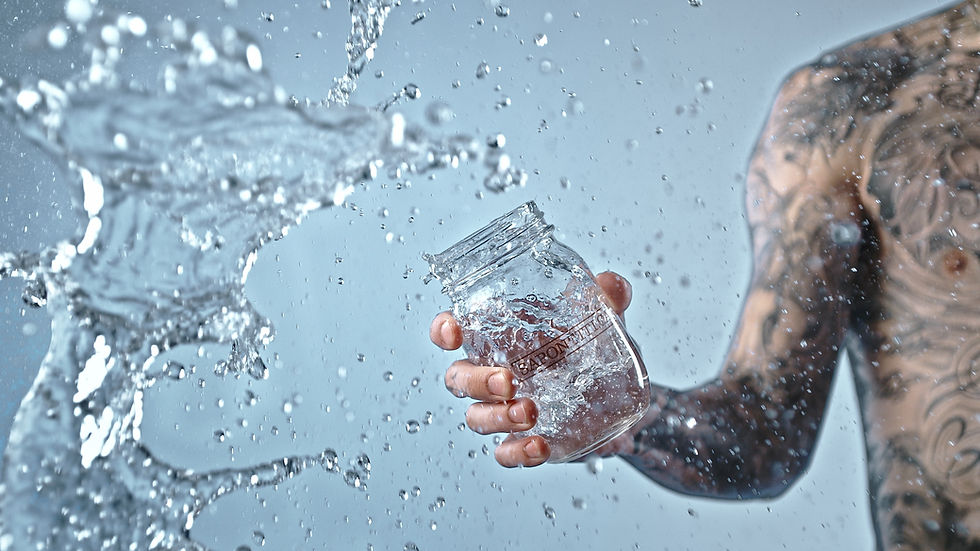Mover Over Bleach, You've Met Your Non-Toxic Match!
- Nikki Self

- Jul 7, 2021
- 3 min read
Updated: May 12, 2023

Hypochlorous acid is bleach's 100% biodegradable, non-toxic & multi-purpose rival.
With the nature-mimicking magic of Hypochlorous acid, you'll be able to clean, sanitize, and disinfect, everything from your hands and wounds to hard surfaces at home & work, pet areas, cars, toilets, smelly gym clothes, and more.
What is HOCl?
Hypochlorous acid (HOCl) is not a chemical; as one might suspect, it is an antimicrobial solution formed from naturally occurring elements: Hydrogen, Oxygen and Chlorine. It is a weak acid similar to mild citruses like mandarins and oranges.
HOCl is a powerful oxidant that effectively targets and kills invading bacteria, fungi, and viruses.
Part of our immune systems
We humans (and all our mammal relatives) produce HOCl inside our white blood cells. It's known to be one of the fundamental mechanisms of our immune defence system, capable of fighting pathogens and harmful bacteria within our body. HOCl is part of how we and all mammals heal and maintain physical health. That's no small feat!
Who discovered it?
In 1834 a French chemist Antoine Jérôme Ballard added mercury oxide distilled in water to chlorine gas, resulting in hypochlorous acid. This early form of Hypochlorous acid is relatively easy to make; however, it produces a difficult to maintain solution, aka not shelf-stable.
Fast forward 100+ years to the 1970s, where a more cost-effective and shelf-stable way to produce hypochlorous acid was born; its name: electrolysis.
How is it made?
We have Michael Faraday to thank for discovering the laws of electrolysis in the 1870s.
The process of electrolysis occurs when tap water is combined with non-iodized salt and runs through a low-grade electrical current, resulting in hypochlorous acid and a byproduct sodium hydroxide. Another common name for HOCl is Electrolysed Water, a direct homage to the process.

How can it be both non-toxic and kill tons of pathogens?
Inside the body, hypochlorous acid knows not to harm beneficial microbes and bacteria. Its purpose is to fight against dangerous organisms and be gentle towards everything else. Thanks to being chemically selective, hypochlorous acid does not harm or cause side effects for plants, animals, marine, or human life. As a result, this makes it the perfect sanitizing and disinfecting solution for all environments.
Does making hypochlorous acid produce waste?
Yes and no in the best way possible!
The production of hypochlorous acid creates a byproduct called Sodium hydroxide. However, this solution provides a myriad of cleaning and degreasing benefits, most notably its ability to eat biofilms (think grease, sweat, soils, syrups, and fats).
Hypochlorous acid rivals chlorine bleach
HOCl is a solution rich in Oxygen which creates an environment pathogens cannot survive in, thus oxidizing harmful microbes in its path. The structural makeup of Hypochlorous acid is what gives it an advantage over Hypochlorite (bleach), which carries a negative electrical charge. HOCl carries no electrical charge and has a relatively low molecular weight making it better able than other chlorine-based disinfectants to quickly and easily penetrate the cell walls of bacteria, viruses, and pathogens. Furthermore, its neutral pH is what enables HOCl to be 100% non-hazardous and non-toxic. More on that in Volume 2!
Historical use as a wound cleaner
Hypochlorous acid was used to treat open wounds and disinfect hospitals during WW1 but was replaced by bleach, which was more stable at the time. Remember, it wasn't until 1970 that electrolysed salt water came to be, which thankfully is a more shelf-stable solution than its predecessor.
A sustainable zero-waster's dream product
Hypochlorous acid is proving to be the epitome of a non-toxic, multi-purpose and sustainable product with an unlimited number of uses. Why hypochlorous acid products from EnviroNize can take over your entire cleaning routine:
Certified organic input
100% biodegradable and non-accumulative
Does not harm plant, animal, marine, or human life
Safe for households with babies and pets
Non-toxic and non-irritant (does not require protective gear to use)
Registered with Health Canada & FDA
No dilution needed; residue-free
Safe around food areas (can also be used to clean fruit and vegetables)
Clinically proven to kill Human Coronavirus
HOCl is not a chemical (explained above) thus not subject to WHMIS Controlled Products Regulations.
HOCl is a waste-free process (its byproduct is a powerful degreaser/sanitizer)
Available in refills (no single-use packaging)
Shelf-stable for one year (don't worry, you'll use it faster than you can keep it around)
Safe & equally effective for home, work, commercial spaces, and more
EnviroNize as a company has a commitment to sustainability and revitalizing our planet
Locally made in London, ON Canada
Delivered to you via 100% emission-free vehicles*
Shop plastic-free refills, exclusively at Saponetti
You read that right! Saponetti is the exclusive retailer in Canada selling hypochlorous acid solutions completely free from single-use packaging.
We carry:
Hypochlorous acid Anolyte 500 registered multi-purpose disinfectant
Hypochlorous acid Anolyte 200 registered sanitizer, wound & produce cleaner, face toner
Sodium hydroxide Catholyte degreaser/cleaner
Available in:
Refills sold in returnable & refundable glass jars
Original packaging not for single-use, refills available!
We deliver throughout Toronto via 100% emission-free electric vehicles.
Join our newsletter, we’ll keep you posted when new content lands.
P.S. Click me and scroll to the bottom of the page.
Written by Saponetti



Comments